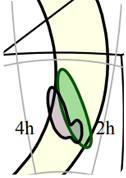Credits |
The LIGO Scientific Collaboration, the Virgo Collaboration B. P.
Abbott, R. Abbott, T. D. Abbott, F. Acernese, K. Ackley, C. Adams, T. Adams,
P. Addesso, R. X. Adhikari, V. B. Adya, C. Affeldt, M. Afrough, B. Agarwal,
M. Agathos, K. Agatsuma, N. Aggarwal, O. D. Aguiar, L. Aiello, A. Ain, P.
Ajith, B. Allen, G. Allen, A. Allocca, P. A. Altin, A. Amato, A. Ananyeva, S.
B. Anderson, W. G. Anderson, S. V. Angelova, S. Antier, S. Appert, K. Arai,
M. C. Araya, J. S. Areeda, N. Arnaud, K. G. Arun, S. Ascenzi, G. Ashton, M.
Ast, S. M. Aston, P. Astone, D. V. Atallah, P. Aufmuth, C. Aulbert, K.
AultONeal, C. Austin, A. Avila-Alvarez, S. Babak, P. Bacon, M. K. M. Bader,
S. Bae, P. T. Baker, F. Baldaccini, G. Ballardin, S. W. Ballmer, S. Banagiri,
J. C. Barayoga, S. E. Barclay, B. C. Barish, D. Barker, et al. (1048
additional authors not shown) |
| GW170814: A three-detector observation of gravitational waves from a, binary black hole coalescence |
| September, 27, 2017 |
 |
On August 14, 2017 at 10:30:43 UTC, the Advanced Virgo detector and the two Advanced LIGO detectors coherently observed a transient gravitational-wave signal produced by the coalescence of two stellar mass black holes, with a false-alarm-rate of $\lesssim$ 1 in 27000 years. |
|
![]()